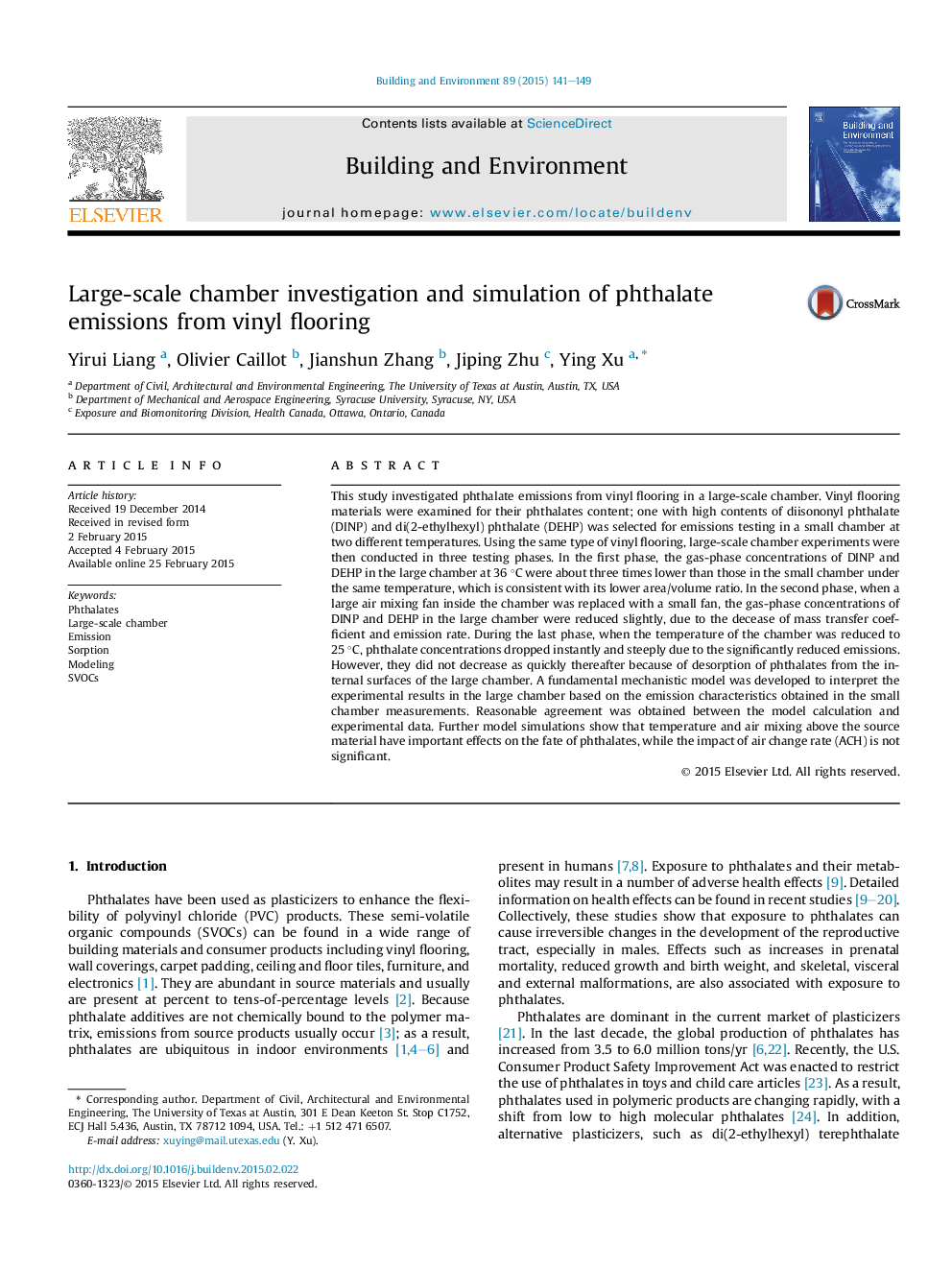| Article ID | Journal | Published Year | Pages | File Type |
|---|---|---|---|---|
| 6699952 | Building and Environment | 2015 | 9 Pages |
Abstract
This study investigated phthalate emissions from vinyl flooring in a large-scale chamber. Vinyl flooring materials were examined for their phthalates content; one with high contents of diisononyl phthalate (DINP) and di(2-ethylhexyl) phthalate (DEHP) was selected for emissions testing in a small chamber at two different temperatures. Using the same type of vinyl flooring, large-scale chamber experiments were then conducted in three testing phases. In the first phase, the gas-phase concentrations of DINP and DEHP in the large chamber at 36 °C were about three times lower than those in the small chamber under the same temperature, which is consistent with its lower area/volume ratio. In the second phase, when a large air mixing fan inside the chamber was replaced with a small fan, the gas-phase concentrations of DINP and DEHP in the large chamber were reduced slightly, due to the decease of mass transfer coefficient and emission rate. During the last phase, when the temperature of the chamber was reduced to 25 °C, phthalate concentrations dropped instantly and steeply due to the significantly reduced emissions. However, they did not decrease as quickly thereafter because of desorption of phthalates from the internal surfaces of the large chamber. A fundamental mechanistic model was developed to interpret the experimental results in the large chamber based on the emission characteristics obtained in the small chamber measurements. Reasonable agreement was obtained between the model calculation and experimental data. Further model simulations show that temperature and air mixing above the source material have important effects on the fate of phthalates, while the impact of air change rate (ACH) is not significant.
Related Topics
Physical Sciences and Engineering
Energy
Renewable Energy, Sustainability and the Environment
Authors
Yirui Liang, Olivier Caillot, Jianshun Zhang, Jiping Zhu, Ying Xu,
